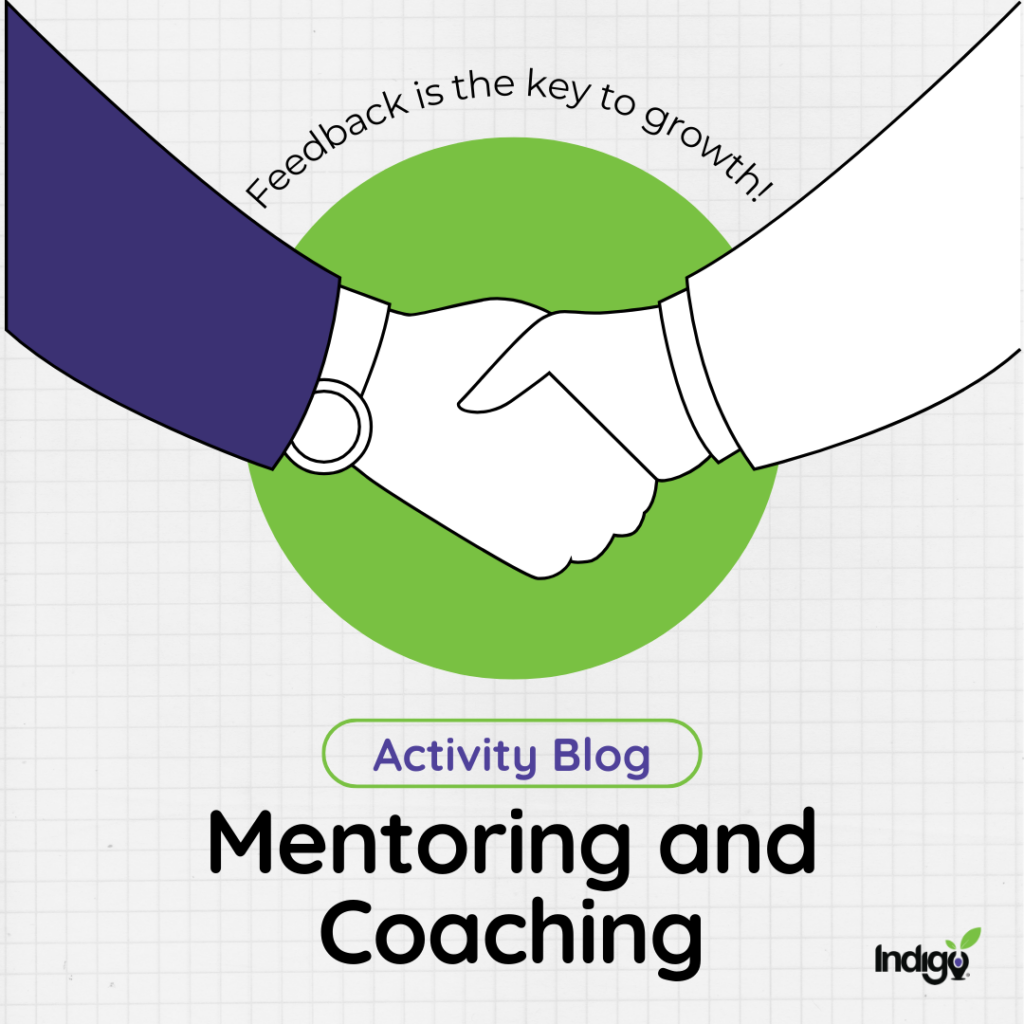Feedback is more than just a formality; it's a vital part of personal and professional growth. Learning how to give and receive feedback effectively can transform our interactions, enhance our skills, and ultimately help us reach our collective goals. In this two-part activity, we will explore effective strategies for both giving and receiving constructive feedback, crucial skills for mentoring and coaching relationships.
Part 1 will guide you through the art of providing feedback in a way that is both supportive and actionable. Part 2 will focus on the importance of receiving feedback with an open mind, introducing the “Yes, And” approach to ensure you can integrate insights into your development.
By mastering these skills, you can foster an environment of continuous improvement and collaboration in any mentoring or coaching setting.
The Goal
Giving and receiving feedback is an integral part of growing as an individual, developing your skills, and working with others to achieve a common goal. This two-part activity will go over how to give and receive feedback using two different methods.
Part 1: Giving Feedback
Step 1:
In your Indigo Report, read the “Potential Weaknesses with Your Style,” “Do’s: How Other People Should Communicate With You,” and “Don’ts: … And How Other People Should Not Communicate With You” sections before jumping into this lesson. After reading these pages, you’ll gain a clearer understanding of how your communication style influences your interactions with others, along with key tips to enhance how you connect based on your preferences. If you have a greater understanding of your own style, it will be much easier for you to effectively communicate with others.
Step 2:
Follow a “Sandwich Method” for providing constructive criticism: 1) start with a positive comment; 2) state the problem or constructive criticism; 3) give a helpful and positive suggestion for improvement.
- Find another student who has taken Indigo. Look at the bottom of your own Skills list found in the middle of your Indigo Report. Since these skills are less developed, think of a time when you struggled in those areas.
- Swap stories about when you struggled with a Bottom Skill. Remember to take note of the whole story, not just the negative aspects.
- Give the other person a positive comment about their experience.
- Next, articulate the main problem that held you back and caused you to struggle in that situation.
- End with a helpful suggestion about how they could have positively solved the problem.
Note: Although subtle, this exercise teaches you to give constructive feedback in a positive light. By ending on a positive note, you equip the person receiving feedback with a tangible solution. This exercise also teaches problem solving through conversation.
Part 2: Receiving Feedback
Step 1:
In your Indigo Report, read the “Potential Weaknesses with Your Style,” and “Do’s and Don’ts of Communication” pages if you haven’t already. Then watch “Yes, And” on YouTube.
Step 2:
Read below to understand the “Yes, And” technique for receiving constructive feedback. This technique boils down to two core concepts: 1) finding something you like in the other person’s feedback and then, 2) finding something to add on to the feedback.
Find Something You Like: Start off by looking at the positive side of any suggestion or feedback. For example, suppose a friend challenges you to read ten books over the summer—but you hate reading. You could respond, “I agree that it’s important to keep learning, even outside of school.” This way, you are saying “yes” to the person’s idea, even if there are parts of the suggestion you don’t like.
Find something to add: Instead of arguing with the other person, go ahead and use their idea—with your own changes and style. For example, you might tell your friend, “I want to keep learning over the summer, and reading is boring to me. I want to be outside! What if we explore local parks and learn the names of all the trees and flowers?” You want to build on the original idea, not shoot it down. The key lies in taking the idea or suggestion and tailoring it to your own unique way of doing things.
Step 3:
Find another person to practice with. Begin with Part 1 of this lesson (The Sandwich Method). After the person provides positive feedback, respond to their idea with the “Yes, And” approach. Find something you like about the suggestion and then add to it with your own ideas and ways of doing things.

